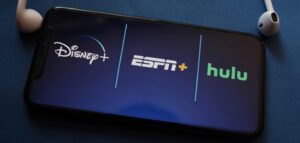 Retailers face an uphill battle when it comes to justifying mobile ad spend. At the Shop.org Digital Summit in Seattle, some shared how they are tackling cross-device measurement and mobile attribution as more time and sales shift to mobile.
Retailers face an uphill battle when it comes to justifying mobile ad spend. At the Shop.org Digital Summit in Seattle, some shared how they are tackling cross-device measurement and mobile attribution as more time and sales shift to mobile.
“There is a study that says people spend 20% of their time on their phone, so that should be 20% of your budget. I hate that study,” said David Abbott, senior director of online marketing for Home Depot. “We don’t know: Is a minute on the phone the same as a minute on desktop? We’re not at 20% of our spend on mobile right now, and I think there’s a reason for that.”
Abbott and other senior retail marketers acknowledge mobile influences more sales than it gets credit for. But without proof, they are spending conservatively.
In some cases, that means tying ad spend to sales volume on mobile devices. That’s tough, because not only are mobile sales a small (even infinitesimal) percentage of most retailers’ ecommerce sales, conversion rates are lower on mobile.
According to Adobe data presented by Forrester analyst Sucharita Mulpuru, desktop conversions are around 3%, while mobile conversions are the 1% range. So even once retailers get a consumer on site, a sale is less likely.
Mulpuru sees a better case for mobile if retailers change how they give credit to sales. Most retailers use last-touch attribution, though it’s a flawed method. “We underestimate the impact of mobile in a last-touch attribution model,” she said.
Freeing Ad Dollars From Silos
For retailers like REI, there is a growing recognition of how online and offline impact each other. During a keynote speech, CEO Jerry Stritzke talked about creating “online flagships” that develop lifelong customers. He highlighted the fact that REI’s best customers shop online and in stores.
REI knows that 75% of people who shop in-store visited the online store in the previous seven days, and browsed in the category matching the reason for the store visit. But the same level of visibility does not exist for mobile shoppers – until they log in, that is.
At Express, the digital budget used to be a percentage of online sales, which is no longer the case. “There is a recognition that there is an in-store impact. It’s a mindset shift,” said Eric Gohs, director of digital marketing and loyalty for Express.
At Home Depot, ecommerce is just 4% of total sales, and mobile sales are an even tinier slice. Home Depot takes a broader view than that 4%, looking at how digital spend as a whole impacts in-store sales, not just ecommerce. For example, while items like paint barely sell online, the company still puts digital ad dollars behind such items. “You’re not optimizing your spend if you’re just looking at your ecommerce sales,” said Abbott.
AdExchanger Daily
Get our editors’ roundup delivered to your inbox every weekday.
Daily Roundup
Home Depot looks at attribution from a few vantage points. One is the relatively slow and time-tested approach of media mix modeling. Abbott noted the approach has flaws, such as assuming there would be zero sales without advertising and providing only a “rear view” of spending impact, which isn’t helpful for seasonal items.
Another way Home Depot has measured online spend involves dialing up or down digital ad spend in certain geographic areas. The A/B geographic split tests allow the company to measure the impact of its digital ad spend in stores, as well as online. While Abbott recommended conducting such tests only with the buy-in of senior leadership, his team didn’t tell store managers, worrying that they might use other methods to make up for a decline in sales – thus distorting test results.
Bringing More Data Into Multitouch Attribution
Retailers are doing some work to extend their data sets to develop better attribution models. Gohs talked about a test Express did with Google and LiveRamp in which anonymized transactional data was matched with clicks that did not result in a sale, resulting in “eye-opening findings” that validated the company’s hunches about the impact some online ads had on online sales.
Retailers can also look for segments such as users that browsed for dresses twice in the last month but didn’t buy online. Maybe dresses are converting better in stores than online, Gohs offered as example.
For retailer and wholesaler The Jones Group, tying more information to the customer database is a goal. “In an ideal world, we would love that Omniture data appended to the customer record,” said Milton Pappas, president of ecommerce.
That would help the brand understand all the touch points that influence a purchase. The most “fuzzy” touch point of all is “when she’s on a mobile device,” Pappas said.













